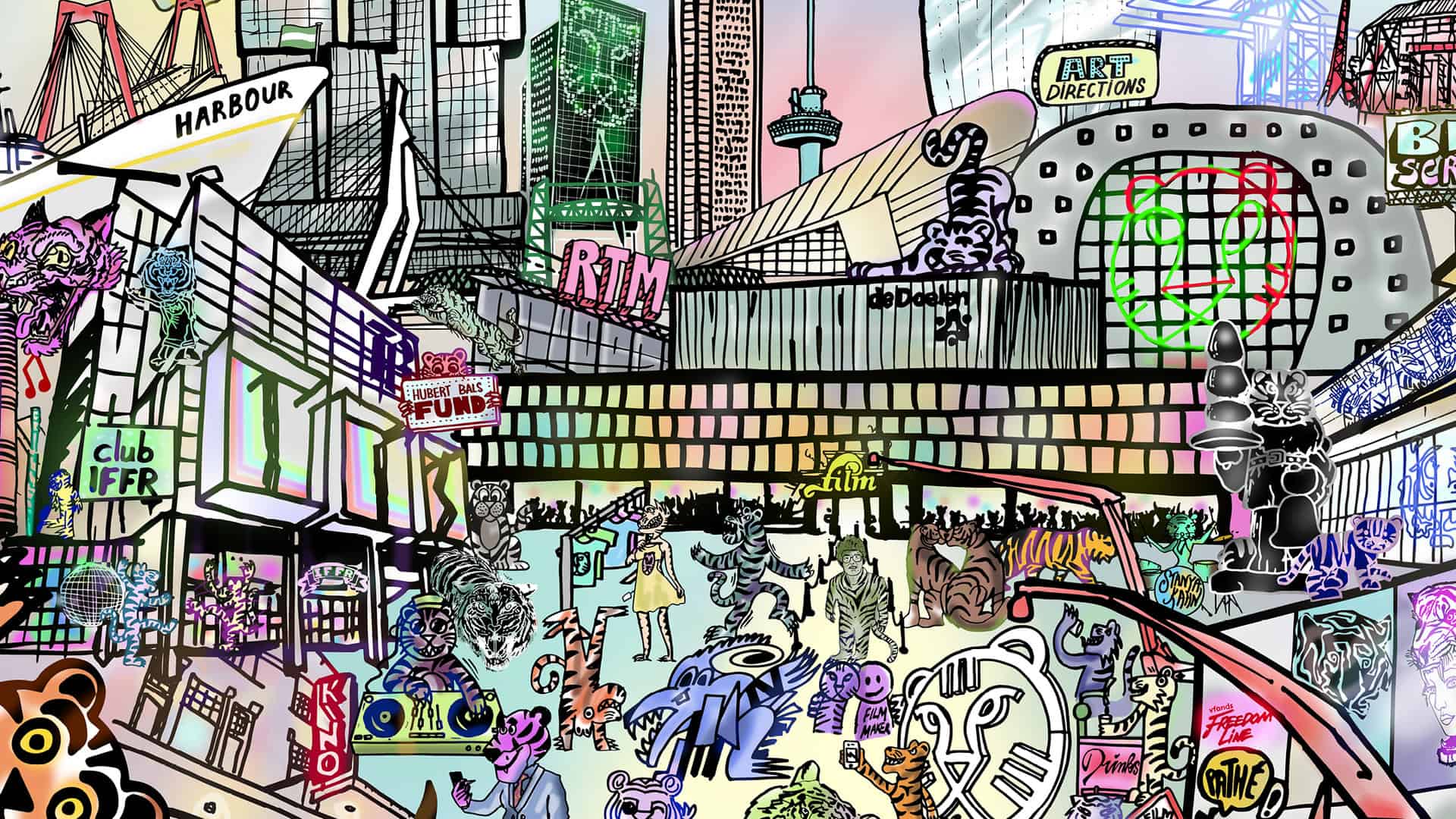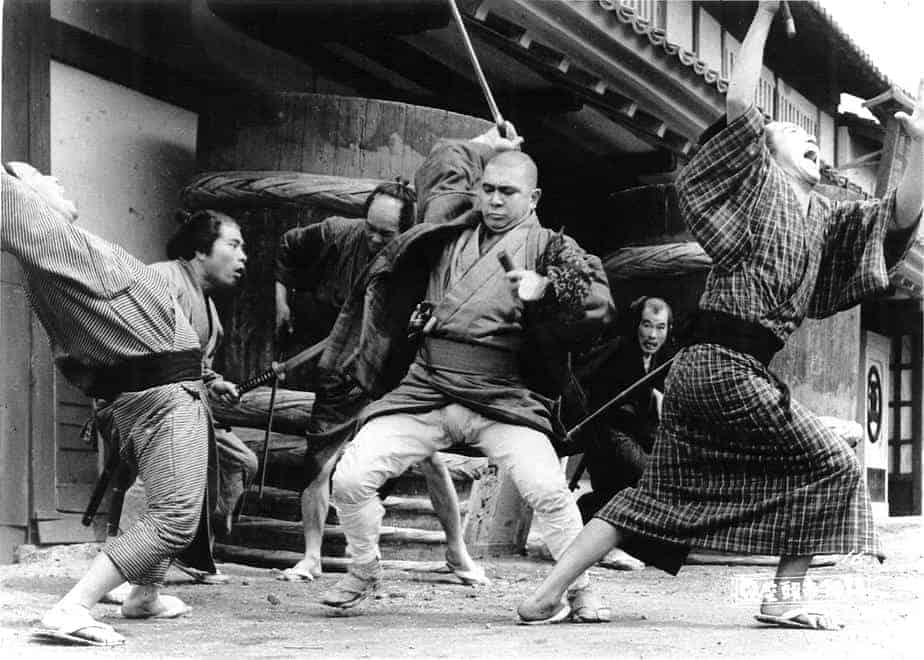By Paul Caspers
Yang Heng, a graduate from the Beijing Film Academy with a major in photography, made his debut in 2006 with “Betelnut” (2006), a plotless mood piece about aimless youth. He shot it himself in very long, static takes, and the film won him several international awards. He achieved an increasingly sophisticated formal style in his three following features: “Sun Spots” (2008), “Lake August” (world premiere IFFR 2014) and “Ghost In the Mountains” (2017)—each with the aid of a different cinematographer. His stunning new film “Silent Ghosts” had its world premiere at IFFR; Yang couldn't attend the festival, but provided some comments via email.
Silent Ghosts screened at International Film Festival Rotterdam

The film is centered around a young woman, who is first found unconscious in the woods by a travelling photographer. The man flees the scene and returns with a policeman from the local town, but they find no trace of her; she finds refuge with a lonely old man who gives her his daughter's clothes. A senior cop and a young punk also cross paths with the woman, and we learn the town has a dark past… None of Yang Heng's films has a story as such, and the way the characters relate to each other in “Silent Ghosts” is as elusive as anything in his previous work. The viewer has to work out the meaning of what happens in the film, and the writer-director confirms he intended for it to be open to different explanations—as well as to inspire reflection on the viewer's own life. Nonetheless, he freely offers his own interpretation.
“Obviously, it is a film of symbolism, in which the metaphors and implications are permeated here and there. The backpacker symbolizes the individuals wandering at the margin of society, and the other four male characters, to some degree, refer to the various life stages of the backpacker. And the only female character is more like the soul of the backpacker, staying within the various stages of the protagonist. She is sometimes far away, sometimes very close, always intangible. And we have a question at times: do we really believe in the existence of soul? If it really exists, do we lose it sometimes by accident? When we face our soul, will we be too scared to encounter it? Or do we keep chasing our soul unconsciously till death is coming?”
Yang also sheds some light on the young punk suddenly losing his ability to speak, which is linked to the local legend of the film's town, a drinking game turned into a murder scene that led to the villagers becoming mute one by one. (This is echoed in both the film's Chinese title, which means something like ‘Aphasia Town', and its English version “Silent Ghosts”). “The theme of this film is how we face our own soul, and how we face the wounds which are beyond the words deep in our soul. And usually, this kind of thoughts, the wounds, can never be precisely depicted by words, and it is a state of ‘silence'.”
Check out the review of the movie
Like all his previous work, Yang set the film in Xiangxi prefecture (in Hunan province), with its mountain roads, canyons, half-abandoned towns and forests. “Xiangxi is my hometown and it is where I spend most of my life, living and creating. It is very convenient for me to do the filmmaking here as I am very familiar with the environment, the spaces and the living conditions, people's habits, et cetera.” He stresses that his entire oeuvre being shot there should not be taken to represent anything else, though. “To tell you the truth, my films are not popular here. I should say they present some of my own life experience.”
There is also, yet again, an abrasive young man, not very different from the young punks in “Betelnut” or any of the other features. “In my opinion, they are actually not real criminals, and I don't think they commit crimes on purpose, or consciously, at least. Instead, usually they act this way because they think it is right out of a very simple morality or value, but in terms of the law, it is destructive violence. So we can say there is a very natural contradiction in them: pure and impatient, energetic and reckless, brave in expression but weak in self-expression. They are actually a combination of extremes and vulnerabilities. Marginalization is another of their outstanding characteristics. Thus, I can feel a kind of repressive power from them.”
After “Ghost In the Mountains” (2017), “Silent Ghosts” is Yang's second collaboration with the great Lü Songye (credited here as Lv Songye), who has shot films for Wang Bin, Pema Tseden and others. “He has quite a rich experience. With his participation, the visual expression and quality have been greatly improved and he did contribute a lot. Compared to “Ghost In the Mountains”, we tried more in the visual representation in “Silent Ghosts”. It is audacious and interesting, and I like it a lot.”
It's no spoiler to note that the film ends with a striking image of a metal frame, part of an abandoned building, that looks like a similar structure in “Ghost in the Mountains”, but also like two adjacent cinema screens. “Actually, when I first looked at it, I had a similar feeling. The rectangle frame looked like two film screens joined together, but it is also a symbol and a metaphor: the concept of 'emptiness' in traditional Chinese Buddhism and Taoism.
“I believe film, to a certain extent, is the mirror image of real life: although it comes from real life, it is fake—a mirage. In films, those vivid images are like dreams, not even existing, but still so real. There is an old saying in Chinese: life is like a dream, which means all of life seems to be a dream world. This might be what I wanted the audience to get: within an empty film frame, we could see a daydream scene.”
Grateful thanks to Cao Shanshan for liaising and translating.















